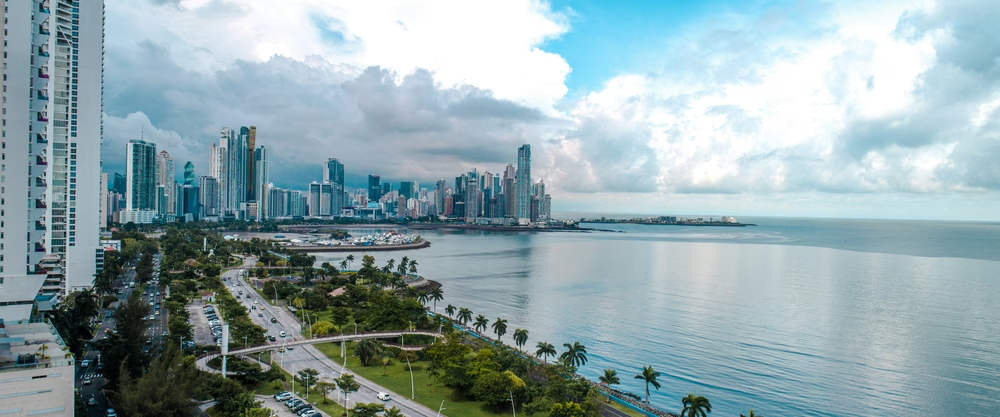

Are you thinking about studying in Panama? Here’s everything you need to know to make the most of your time as an international student. From the entry requirements and top universities to finding the right accommodation and ideas for your free time.
Panama’s quickly becoming a favourite spot for students worldwide. With its great location, warm weather all year round, a mix of cultures, and a modern vibe with Caribbean touches, studying here is truly one-of-a-kind. Plus, you can explore everything, from stunning beaches to lush rainforests, dive into the country’s rich history, and enjoy some seriously tasty food. Let’s check out why Panama could be the perfect choice for your studies!
Most international students in Panama go for Panama City —where loads of top universities are. Plus, you get a modern vibe with a buzzing social scene, plenty of shops, bars, museums and a real mix of cultures. Another cool option is David, down in Chiriquí province, which is way quieter and surrounded by nature, perfect if you’re after mountains, parks, and a more chilled-out lifestyle. Which city you end up in usually depends on which uni your home university has a deal with, but either way, both spots offer pretty different experiences.
Here are some of the usual requirements and documents you’ll need to sort out for your exchange in Panama:
Just a heads-up: most of these documents will need to be in Spanish or officially translated, and quite often they have to be apostilled or legalised too.
One of the top reasons to study in Panama is to really get to know its unique culture. It’s a mix of indigenous, African, Hispanic, and Caribbean influences, which makes it super diverse and full of colourful traditions. There are loads of celebrations all year round, with music, bright costumes, traditional dances, and lively parades—including national holidays and carnivals. The country’s also rich in music and art, which you’ll see everywhere in murals, fairs, and cultural events.
What really stands out about Panama is how warm and friendly the people are. Panamanians are open, welcoming, and always up for a chat or to lend a hand. You’ll soon feel part of the scene, which makes settling in a lot easier.
Spanish is the official language, so if you’re from a Spanish-speaking country, you’ll have no trouble fitting in. And if you don’t speak Spanish, it’s a great opportunity to practise as you’ll be surrounded by native speakers, and universities usually offer support for international students. Plus, English is spoken in tourist areas and some courses.
Studying in Panama also means you’re in a place where you can go from city life to the beach or mountains in just a few hours. It’s perfect if you want a mix of study, adventure, and nature. And thanks to its location, Panama is a great base to explore other countries in the region during your time here, as the Panama City Airport has flights to loads of places!
Last but not least, Panama is a major logistics and financial hub in Latin America, home to multinational companies, international organisations, and steady economic growth. That means plenty of academic and job opportunities, especially if you’re keen on internships or getting some professional experience during your exchange.
One of the best things about studying in Panama is there’s always something new to do, wherever you are. If you’re based in Panama City, you can check out the famous Canal, wander around the Old Town with its colonial charm, enjoy the food and hit up the nightlife in spots like Bella Vista. Plus, you’re just a couple of hours from gorgeous beaches on the Pacific or Caribbean—perfect for a weekend escape.
If you’re more into nature and adventure, the countryside’s packed with stuff to do. In Chiriquí, you can hike up Barú Volcano, visit coffee farms, or chill out in Boquete, a lovely town surrounded by mountains. Over in Bocas del Toro, by the Caribbean, there are stunning beaches, laid-back nightlife, and plenty of activities like snorkeling, diving, or surfing.
Beyond the city life, Panama is home to seven recognised indigenous peoples, each with their own language, dress, and traditions. If you’re keen on cultural exchange, you can join community experiences or visit places like the San Blas Islands (Guna Yala Archipelago) or Emberá communities to get a real feel of their lifestyle.
And the food? Panamanian cuisine is a real highlight, mixing Afro-Caribbean, Creole, and indigenous flavours. You’ve got to try dishes like “sancocho”, “arroz con pollo”, “carimañolas”, and “ceviches”. Each region’s got its own specialities, so it’s well worth tasting your way around the country.
Find the ideal accommodation in your desired location